The distinguishing characteristic of the tank engine is not so much the absence of a tender as such, but rather the ability to run in either direction equally well, eliminating the need to turn locomotives at termini. This page deals with tank engines that were, or appear to be, designed so that travelling cab-first was the preferred direction of travel. This meant large windows at the "rear" of the cab, so the view was much better than that of a tank engine proceeding in the usual chimney-first direction.

THE FIVES-LILLES TANK ENGINES. (France)
The St Georges-La Mure line in France was the starting point of a large project which would have linked Grenoble and Gap (120 km away), hence the acronym SGLM-G (St Georges de Commiers à La Mure et Gap). Though never finished the line did extend 60 for km. In 1886 the French manufacturer "Compagnie de Fives-Lilles" was building all rolling stock and was apparently operating the line too. The engineer Edmond Roy designed 0-6-2 tender-locomotives for coal haulage, with two "radiant" axles working like a Bissel truck, to help the locomotive to negotiate the tight radius curves on the line. The SGLM-G line had a large number of tunnels for its modest length, and these locomotives normally ran cabforward so that the crew were not choked by steam and smoke.
These locomotives could haul more than 65 Tonnes at 20 Km/h uphill. Downhill, coal trains weighing 180 Tonnes were drawn at 45 Km/h. After 1909 the use of these locomotives began to fall off, but the last remaining example was not scrapped until 1962.
 |
| Left: A Fives-Lilles Tank Engine. Note four large windows at the front/back of the cab, for cabforward operation.
This tank engine was built by the Compagnie de Fives-Lilles. The total weight of these locomotives ranged from 30 to 37 Tonnes; horsepower varied between 225 and 275 HP, varying from one series to another. The driver diameter was 1 meter; all versions were equipped with a non-automatic vacuum-brake.
As of Nov 2003, the Groupe Fives-Lilles still exists.
|

TANK ENGINES OF THE CHEMIN DE FER DE LA BAIE DE SOMME
The Chemin de Fer de la Baie de Somme (Somme Bay Railway), is now a preserved railway in northern France. Part of it is dual-gauge, metre and standard gauge being combined by laying four rails. The line opened to traffic on 5 June 1858. You can learn more from Wikipedia.
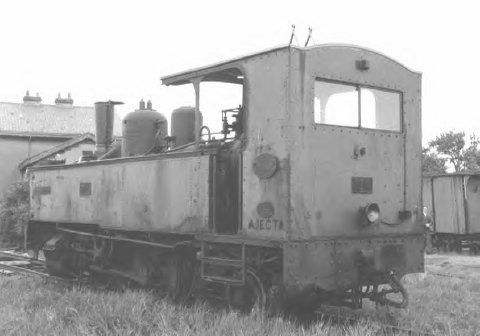 |
| Left: A Baie De Somme tank engine, with a large cab window.
As used on the Baie De Somme railway in France. This example looks like it might have been out of use; date of photo unknown.
|
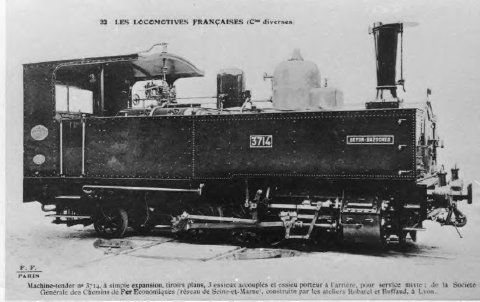 |
| Left: Manufacturer's photograph of the same design as immediately above
The locomotive is numbered No 3714. The text at the bottom of the postcard is barely legible, but indicates that the builders were Buffaud et Robatel of Lyon.
|
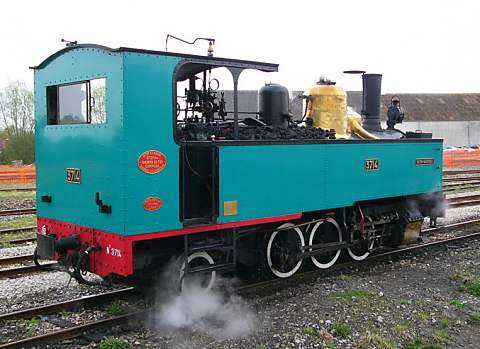 |
| Left: No 3714 lives!
Note coal storage to the right of the cab.
|

THE BICABINE 030 T PINGUELY TANK ENGINE. (France)
This remarkable 0-6-0 tank engine could not only run in either direction but had a cab at each end. Named "Isere", it began its career in 1909 on the Lyon to St-Marcellin Tram line in the Department of Isere in South-East France. Pinguely was the name of the manufacturer; see Wikipedia. Pinguely also supplied locomotives to the Chemin de Fer de la Baie de Somme. (see above)
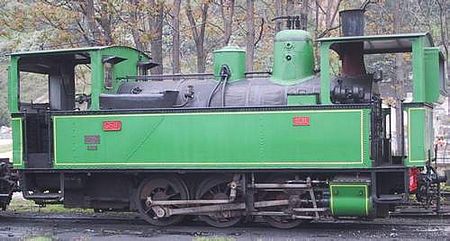 |
| Left: The Bicabine 030 T Pinguely
It was "plastiquée" in 1943, which I assume means damaged by the French resistance using plastic explosives. Having been repaired, it was sold to Forges Gueugnon, where it worked on their internal metre-gauge network. After a varied career it was rebuilt at Vivarais, where the forward cabin, which had been "destroyed by the vicissitudes of an over-intensive operation", was replaced. Classified a historical monument, it still runs on the Tournon - Lamastre line, apparently hauling light tourist trains.
It appears that coal was stored in wedge-shaped bunkers adjacent to the cab on the left.
|
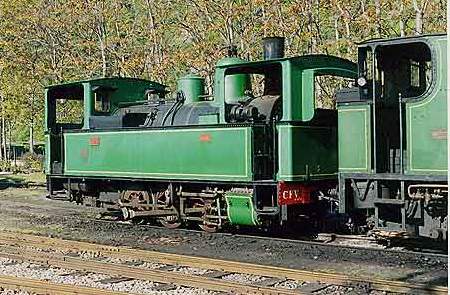 |
| Left: Another view of the Bicabine Pinguely
Inside the cab on the right there is a small machine which I strongly suspect is a turbine-driven electrical generator.
|

THE DUBLIN AND BLESSINGTON STEAM TRAMWAY
 |
| Left: Locomotive No 10 of the Dublin and Blessington Steam Tramway
These distinctive 2-4-2 tank engines had a cab at each end for running in either direction; note the large windows at each end. There may have been some duplication of the controls but this is currently obscure. The chimney is tall to lift the smoke over the double-decker carriages that were used.
The Dublin and Blessington Steam Tramway, (DBST) which later became the Blessington and Poulaphouca Steam Tramway, operated steam trams between Terenure in Dublin and Blessington in County Wicklow from 1888 until 1932. The tramway used the Irish standard gauge of 5 foot 3 inches.
|
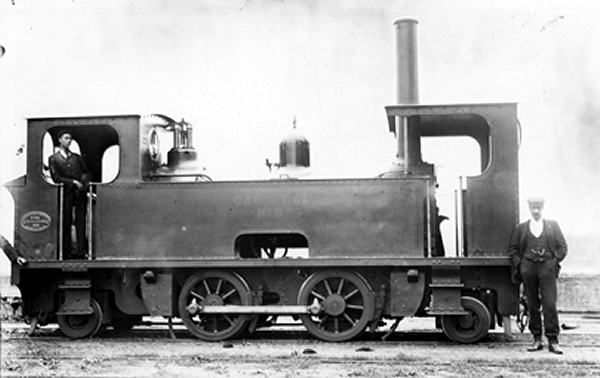 |
| Left: Locomotive of the Dublin and Blessington Steam Tramway
Locomotive number unknown.
|
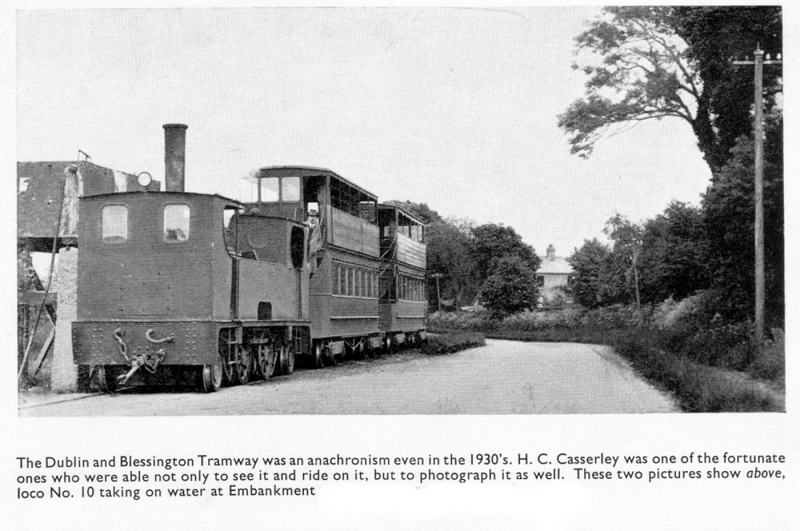 |
| Left: Locomotive No 10 of the Dublin and Blessington Steam Tramway
This image shows the double-decker carriages that were used.
|

SOUTHERN PACIFIC SHUNTING ENGINE
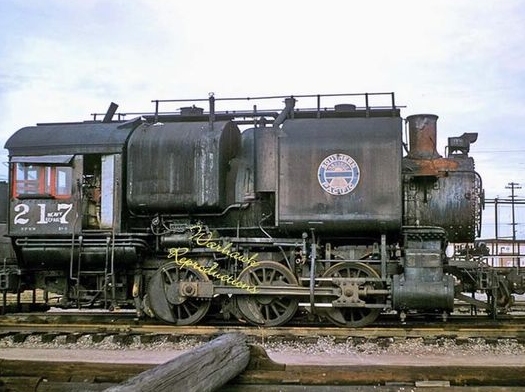 |
| Left: Unknown 0-6-0 shunting locomotive
This 0-6-0 locomotive is included here because it looks well weird, guvnor. It is steam-shop switcher (shunting) loco No 217 on the Southern Pacific. It was rebuilt from a S-8 #1295. There is certainly full fenestration at the rear of the cab on the left, very suitable for cabforward operation. However, what really catches the eye are the two enormous saddle tanks over the boiler.
The explanation is that this was an oil-fired locomotive. One of the tanks (presumably the one nearest the firebox) held oil fuel and the other water.
|

UNKNOWN FIRELESS ENGINE
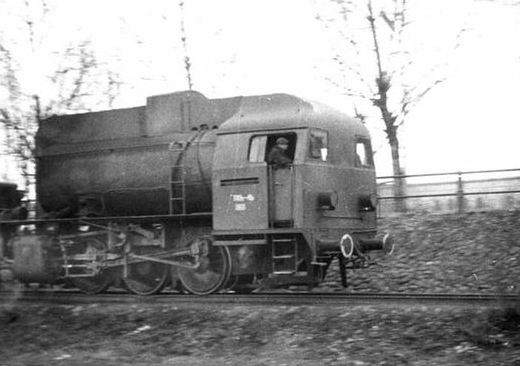 |
| Left: Unknown fireless 0-6-0 locomotive
This machine was 'found on the internet' and was identified as a fireless locomotive as there is no sign of a chimney or coal bunkers. It looks designed for cabforward operation.
It is a Polish Tki-3b fireless Locomotive. They were conversion of Prussian T9 series tank engines.
|
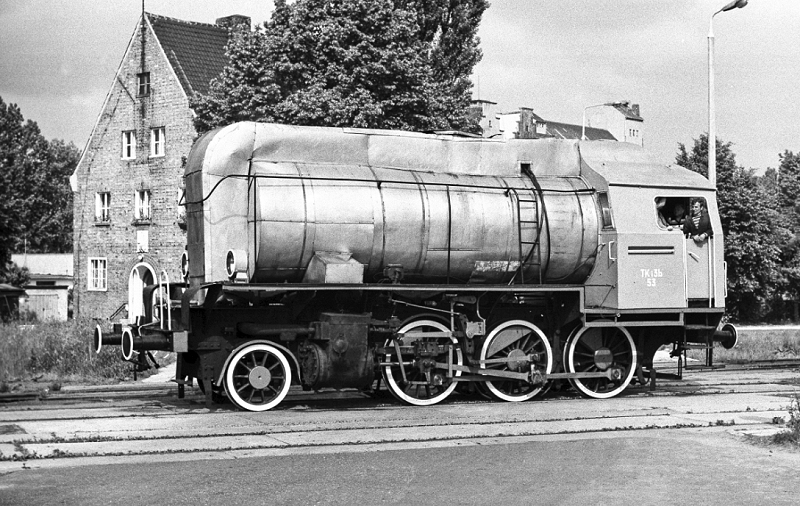 |
| Left: Unknown fireless 0-6-0 locomotive
Large number of TKi3s– 59 machines– were converted into fireless locomotives between 1951 and 1959. Designated TKi3b (b for ‘bezogniowy’ – fireless), they remained in service for much longer than the original version of the engine.
|


























